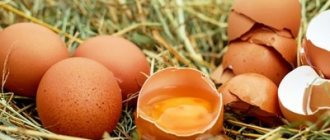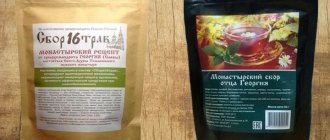Currently, it has become “fashionable” to treat many diseases using unofficial methods. These can easily include monastery tea, which is touted as a miracle remedy. But what actually is it - a really very healthy drink prepared according to ancient recipes, or another marketing ploy that replaced goji berries?
Monastic tea is another scam, among many others sold under a similar scheme. If you see a beautiful, bright page with any product, where a very profitable promotion, a time counter or the remaining number of packs, as well as reviews from doctors and buyers (you cannot publish your own) immediately catch your eye, they are trying to deceive you!
Monastic tea: truth or scam?
There is a lot of talk about monastery tea. The advertisement says that it can heal a huge number of diseases. But is this true or a scam?
In fact, monastery tea is a good treatment aid. The drink helps get rid of the disease only in combination with other methods (diet, medications, etc.). If you use only it, then the maximum that it can do is alleviate the condition.
ABC RECOMMENDS
Star anise: benefits for human health, properties and applications
What do advertisers and sellers say?
It contains natural ingredients growing in Russia and Belarus:
- Dandelion
- Blueberry berries and leaves
- Burdock
- Horsetail
- St. John's wort
- Dog-rose fruit
- Chamomile flowers, etc.
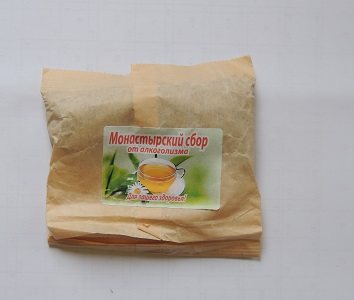
On the reverse side there is also only the name. Photo courtesy of a disappointed customer. The composition may vary depending on the manufacturer. Also, in many cases, just a package arrives in the mail with a label on which there is nothing except the name (example in the photo above).
In fact, all the components in the collection stated on the websites are antioxidants that have general strengthening properties for the body. Manufacturers allegedly hide the full composition of tea or do not indicate it at all. But they emphasize that it was prepared according to the recipes of the monks, who have long been collecting medicines and treating many diseases.
The St. Elisabeth Monastery, located in Belarus, most often appears in advertising as the manufacturer of this product, but this is only according to the sellers’ statements. The consumer is encouraged to drink at least 2-3 cups of the drink per day instead of the usual tea or coffee. After a month of taking the drug, you will be able to feel the first results. But one pack is never enough, and you will be persistently offered to take several at once!
Monastic tea: composition
The main feature of monastery tea is its unique composition. All herbs collected must be grown far from civilization, preferably on the territory of a monastery.
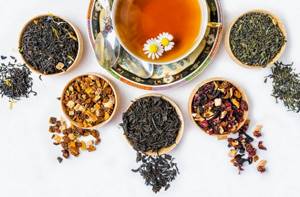
Photo source: shutterstock.com
The ancient recipe for the drink was invented by a monk-healer. Classic monastery tea consists of the following herbs:
- oregano;
- chamomile;
- St. John's wort;
- horsetail;
- series;
- thyme;
- dandelion.
New varieties of monastery tea include many more herbs. To the above basic plants add immortelle, sage, elecampane, rose hips, nettle, buckthorn and linden.
How is the therapeutic effect achieved?
- As noted above, each type of monastic collection has its own individually selected composition for the treatment of certain types of diseases, and has already proven itself over the centuries.
- Taking one type of medicinal herb can be compared to one horse, and taking a properly balanced complex of herbs can be compared to a whole herd. The correct proportion and composition provide the so-called synergistic effect, that is, when the effect of one component enhances the effect of the other.
It is due to the factors listed above that the powerful therapeutic and preventive effect of monastery tea is ensured.
What does monastery tea help with?
It is important to remember that this collection is only an aid in the treatment of diseases. It is effectively used in conjunction with the main treatment for various ailments.

Photo source: shutterstock.com
For pancreatitis
The herbal mixture has a relaxing effect, helping to relieve pain and inflammation of the pancreas. In the chronic form of pancreatitis, monastery tea should be drunk 3 times a day, 100 ml after meals. The duration of the course is 3 weeks. After this you need to take a break for a week. The full course lasts about 3 months.
In acute forms of pancreatitis, monastery tea is taken only after consultation with a doctor.
For the thyroid gland
The monastic collection helps with the following problems with the thyroid gland:
- hyperthyroidism;
- increase due to iodine deficiency;
- recovery after surgery, radiation therapy;
- diffuse goiter with preserved thyroid function.
Tea should be drunk warm, 100 ml half an hour before meals. The course of admission is 1 month. Then you need to take a break for a month. After this, you can continue using the drink.
From parasites
Monastic tea has an antiparasitic effect. It is better to drink the collection in the morning on an empty stomach. But if desired, you can divide it into several servings and take it throughout the day.
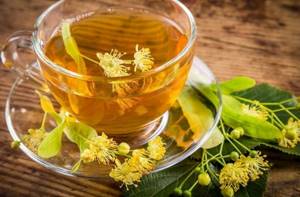
Photo source: shutterstock.com
You need to start the dosage with a quarter glass, gradually increasing the volume to the whole container. The course of treatment is 4 weeks. If necessary, the health course can be repeated after some time.
Many sites write that Elena Malysheva called monastery tea a panacea against intestinal parasites. However, the TV presenter herself denied this information.
For psoriasis
Monastic tea helps eliminate intense itching, stop inflammatory processes and relieve redness of the skin due to psoriasis. To obtain a pronounced effect, it is recommended to take 200 ml of medicinal tea 2 times a day. The duration of the course is from two weeks to a month.
For diabetes
Monastery tea helps relieve diabetes. You need to drink 150 ml of tea 3 times a day. This should be done 30 minutes before meals. The full course is 21 days. After a month's break, you can repeat it.
For the stomach
Monastic stomach tea helps relieve pain caused by gastritis or stomach ulcers. At the same time, heartburn is eliminated. Just 15 minutes after administration, the pain decreases. In addition, gastric collection helps restore enzyme synthesis.

Photo source: shutterstock.com
From smoking and alcoholism
The composition of the drink helps relieve inflammation and cleanse the body of toxins after heavy drinking or smoking. It can also relieve cravings for alcohol and cigarettes. You just need to brew tea and enjoy it twice a day.
Monastic tea has a beneficial effect on the nervous system, minimizing the likelihood of breakdowns in the treatment of alcoholism.
For weight loss
Monastic collection for weight loss reduces appetite, accelerates metabolic processes, prevents the absorption of fats and helps cleanse the body of toxins. As a result, the person’s weight returns to normal. In order to lose weight, you need to drink tea 3 times a day, 200 ml. The duration of the course is 30 days. After this you need to take a break.
If desired, monastery tea can be replaced with chaga (kombucha). It has similar properties.
Monastic collection for weight loss
Now, weight loss products couldn’t come at a better time - spring has come and everyone will start going on diets, buying gym memberships and, of course, looking for easy ways to lose weight. This is where many people will come across monastery tea for weight loss and after reading the promises, I’m sure many will buy it. After all, the sites promise:
- the safest and, most importantly, fastest weight loss (15 kg in 2 months);
- the result will be noticeable within a week (there is no need to wait for months for at least some result);
- the effectiveness has been clinically proven (though it’s not entirely clear by whom it was proven, but they promise that the monastery’s weight loss collection works for everyone without exception);
- an ecological product produced in the monastery according to 19th-century recipes (nowadays there is generally a fashion for everything natural and environmentally friendly);
- and a bunch of additional positive actions (enriches our body with all the necessary microelements and vitamins, has a good effect on the nervous and digestive system, strengthens the immune system, increases performance and your mood, improves nails, hair and skin).
According to the sites, even some kind of experiment was carried out on 200 people, these were both women and men of all ages (so that you have no doubts “maybe the monastery weight loss fee is not suitable for me...”). 22 people out of 200 lost more than 10 kg in a month, 118 people lost 7 kg or more. And the promise to lose weight is backed up by the words “If they can lose weight, so can you.”
Price of monastery tea
Customer reviews repeatedly say that the price of the drug is too high. Many are confused by the fact that 100 grams of real monastery tea can cost so much. The price at the pharmacy starts from 500 rubles and above. For example, the monastery tea of Father George costs 1,800 rubles per 100 grams.
Some popular economists have already calculated the cost of the drink. By making a similar collection at home from herbs purchased at the pharmacy, you will save a decent amount. So, how much will it cost to make your own herbal tea? Such a preparation will cost around 150 rubles per 100 grams.
You can order cheap varieties of the drug on the Internet. For example, the average price for Crimean monastery tea is 200 rubles per 100 grams.
What is a monastery tax, according to sites selling it
Let's start with what monastery tea is. There is a lot of information on the Internet and it is called differently “monastic tea for alcoholism”, “monastic tea for diabetes”, “monastic collection of Father George”, “monastic tea for hypertension”, etc. The monastic collection for all diseases has become very popular on the Internet. Apparently, because many still want to believe in “miracle cures,” and attackers take advantage of this and profit from the misfortune of others, luring people to purchase the monastery collection with the slogans: “The disease can be cured!”, “You will become completely healthy again,” “ The effectiveness is clinically proven." In general, it is a collection of selected herbs, carefully selected and grouped as if by monks to obtain the desired result.
Monastic tea: reviews from doctors
As a rule, doctors have a positive attitude towards monastery tea. In order not to be unfounded, we present real reviews from doctors about this healing collection.
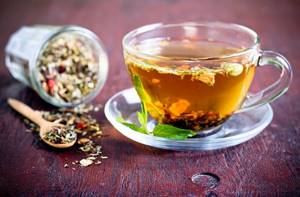
Photo source: shutterstock.com
Elena Zueva, nutritionist, candidate of medical sciences
In ancient Rus', monastery tea was drunk as a general tonic. But drinking it for weight loss is just a marketing ploy, as was already the case with goji berries and green coffee.
Georgy Sergeevich Khromov, nutritionist
Recently I had the opportunity to communicate with my German colleagues. They said that they use herbal teas quite successfully in their practice. Practice shows that they are very effective for various ailments associated with metabolic disorders. This made me think about the possibility of using monastery fees in my work.
Bottom line
- All statements that this “miracle” collection was collected by monks in special places, prayers were held over it, etc., are nothing more than a fiction of advertisers.
- By mail you will receive either a bag with a label from some organization that issued it, or just a set of something unknown in a plastic package.
- The composition may well include the declared herbs. But this will only give the remedy general strengthening properties, but will not give it the power to treat diabetes, obesity, prostatitis and addiction. For these purposes, special herbs and mixtures that have been tested over the years are better suited, rather than the universal “miracle tea” that has recently begun to be imposed on people.
- In the West, nothing is known about the monastery tea - this shows that the marketing campaign was launched only in the CIS countries.
If there was a remedy that could cure all diseases at once, humanity would have long forgotten about the existence of such diseases. Man is given reason, and if used correctly, one can learn to distinguish truth from fiction. Therefore, answering the question “Is monastery tea a scam?”, we can say that you shouldn’t place any special hopes on it. Considering that advertisers lie even about its manufacturer, hiding behind the name of a famous monastery, just so as not to harm themselves when taking it. And the worst thing is that people no longer fear God and are trying to make money on the name of the saints and the church, as well as the health of those who have abandoned other methods of treatment for the sake of this tea.
( 1 ratings, average: 4.00 out of 5)
How to take it correctly?
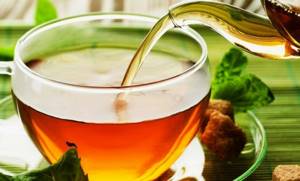
To achieve the desired result and increase immunity, you need to brew monastery tea correctly. Instructions for use:
- Pour 1 tbsp into a glass. l. collection and pour 250 ml. boiling water;
- The container is covered with gauze. The decoction must receive oxygen for proper brewing;
- The tea is infused for 30 minutes;
- The gauze is removed and the monastery tea is ready for drinking.
The brewed drink can be used chilled or warm according to desire and preference. Drink tea after meals, one cup per day.
Monastery tea is not recommended to be stored for a long time in its finished form. Brew a fresh drink before each meal.
Monastery tea can be brewed in another way - in a water bath. Cooking instructions are as follows:
- Elecampane root and rose hips (20 g) are poured into 1 liter. boiling water;
- The composition is simmered over low heat for 20 minutes;
- Then monastery tea (10 g) is added and left on the fire for 40 minutes;
- The tea is removed and cooled to the required temperature.
After preparing the tea in a water bath, you should take the tea in the same way as with the usual method.
Customer Reviews
People confirm that the drug has the desired effect.
Elena, 48 years old, Chita I drink antiparasitic tea for preventive purposes, we have two dogs, we need to take precautions. The tea perfectly cleanses the body, boosts the immune system, and tastes quite pleasant.
Anastasia, 28 years old, Moscow I didn’t even think that such an unpleasant problem as parasites would affect me. It all started with nausea in the morning and stomach pain. I went to the hospital, it turned out to be worms. A colleague advised me to buy a drug against parasites. I decided to try it, and I didn’t regret it, it really helped me. Feeling better the next day. I took the course, became more cheerful, more active and my appetite improved!
List of sites where they cheat
Below in the list are sites where they deceive by selling Monastic Stomach Tea. This is not the entire list of scam sites , since scammers constantly change names and addresses. If you find a site that is not on the list, please share the link in the comments at the bottom of the page.
- eldorado.ru.net
- mega.skidka.ru.net
- xcartpro.com
- ru-site-online24.ru
- special-sales.com
- xfastcart.com
- xshopgood.com
Difference between herbal remedy and medicine
Monastic anti-parasitic tea was invented by novices of a Belarusian monastery in the 19th century. The composition is completely natural - the monks collected herbs from the surrounding forests and meadows, dried them and prepared healing decoctions according to their own recipes. It was discovered that each ingredient had a strong antiparasitic property, but together different herbs and berries coped with the task even more effectively - they cleansed the human body of parasites and improved health.
According to reviews of doctors and people who performed treatment, this anti-worm tea deserves attention for several reasons:
- The composition of Monastic antiparasitic tea is 100% natural, has no contraindications and does not cause side effects.
- It cleanses very gently, so you can drink it without a doctor's prescription.
- Antiparasitic tea is made on the territory of Belarus, and this country is famous for the purity of its nature.
- The monastic antiparasitic collection helps not only to fight worms, fungi and various reptiles, but also has a positive effect on almost all human systems.
- Reviews about Monastic anti-parasitic tea are mostly positive; people praise it not only for its good results, but also for the fact that the drink has a very interesting taste and aroma.
The tea contains only natural ingredients.




